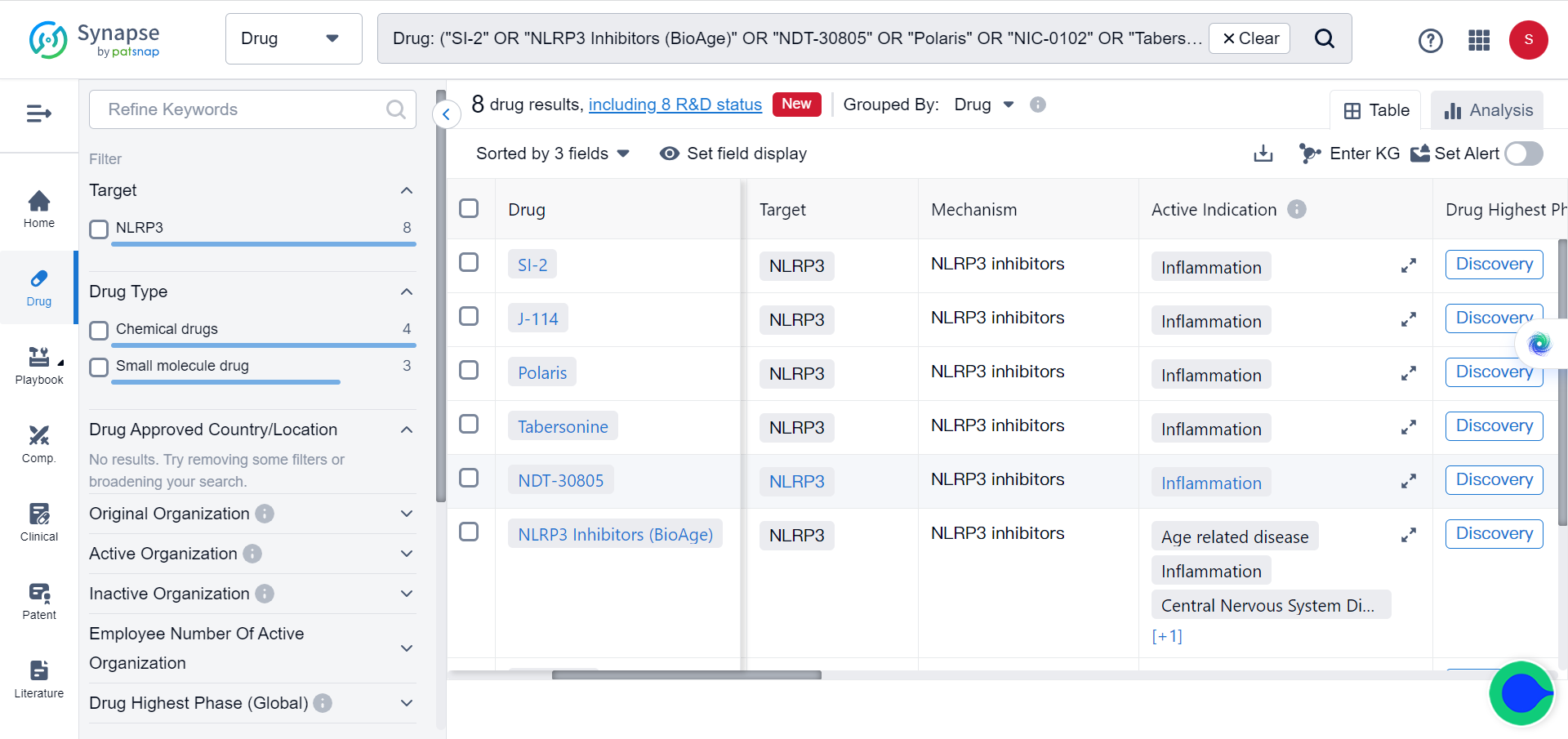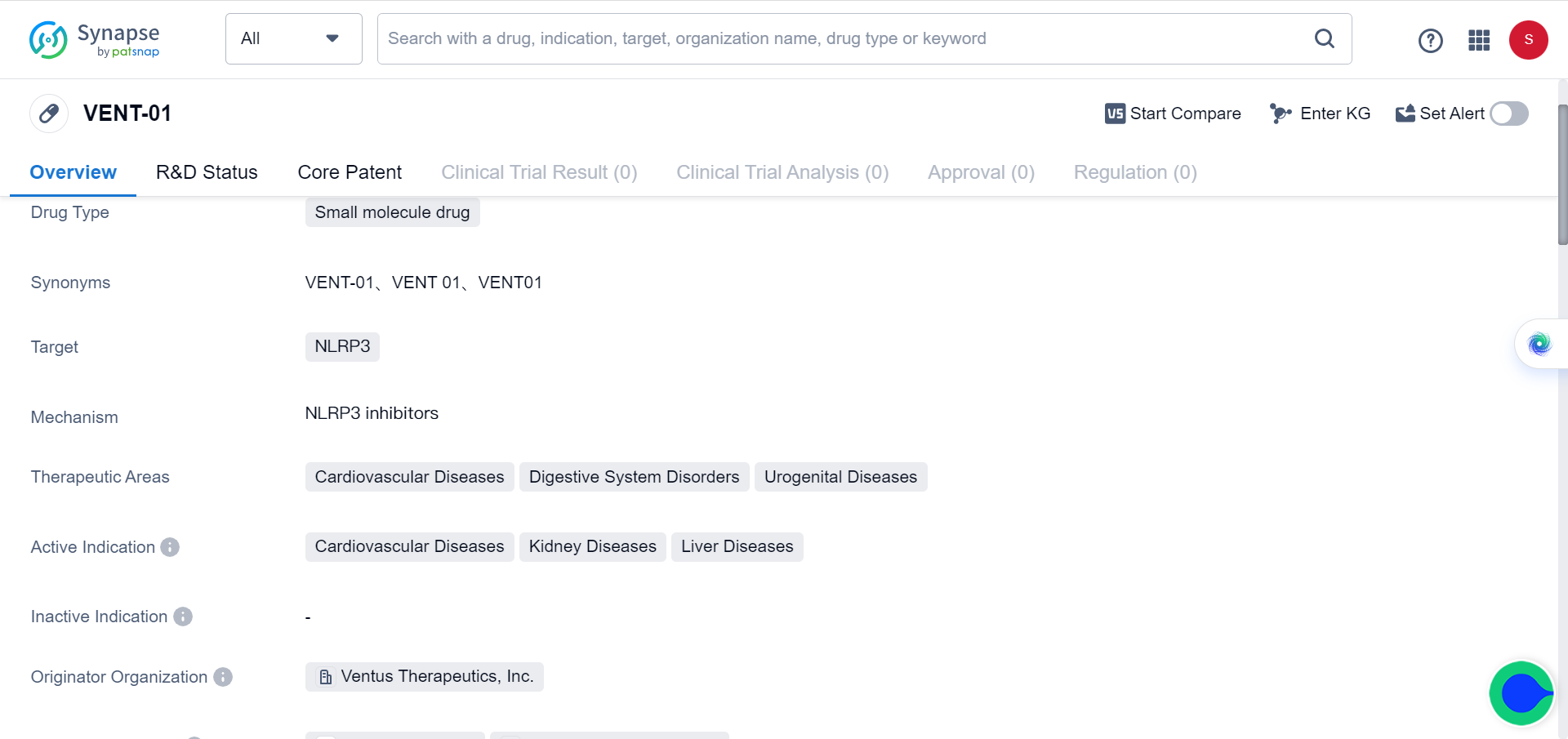Inhibiting NLRP3 Signaling Unlocks the Fountain of Youth for Aging Kidneys
With the increasing aging population and longer life expectancies, the impact of aging on kidney health has become a significant concern. It is noteworthy that chronic and end-stage kidney diseases are more prevalent among the elderly population than any other age group.
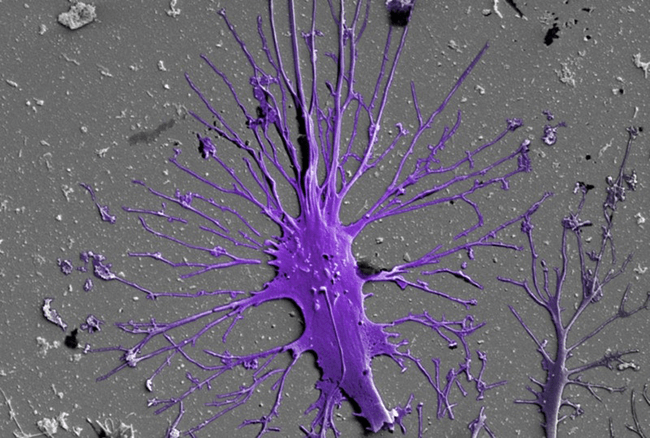
NLRP3 signaling and podocytes
The lifespan and health-span of podocytes, which are specialized epithelial cells of the kidney glomerulus, following mitotic division, are closely associated with typical age-related glomerulosclerosis. Podocyte aging encompasses various characteristics of aging, such as the accumulation of p16 Ink4a, activation of p53, and shortening of telomeres.
Researchers have made significant progress in understanding the role of NLRP3 signaling in the aging process of podocytes, a type of kidney cell. A recent study published in the journal Aging reveals that inhibiting NLRP3 signaling in aging podocytes can potentially improve their lifespan and overall health. The findings offer new insights into combating kidney aging and related diseases.

Synapse database shows that NLRP3 is targeted by 8 drugs for inflammation and age-related diseases. In addition, VENT-01, another NLRP3 inhibitor, has been used to treat kidney diseases, among many other conditions.
Led by a team of scientists from the University of Washington, Cleveland Clinic Foundation, and other renowned institutions, the study utilized a combination of genetic and pharmacological approaches to investigate the effects of NLRP3 inflammasome inhibition in podocytes. The NLRP3 inflammasome is a protein complex known to contribute to inflammation and cellular damage.
Podocyte Inflammation promotes Cellular Aging
The study examined transcriptomic changes in podocytes isolated from middle-aged 19.5-month-old mice compared to young 4-month-old mice. Gene set enrichment analysis uncovered an inflammatory phenotype in the middle-aged podocytes, with heightened expression of pathways governing inflammatory responses, the NLRP3 inflammasome, IL2/Stat5 signaling, IL6 signaling, interferon gamma, allograft rejection, complement activation, and TNF signaling.
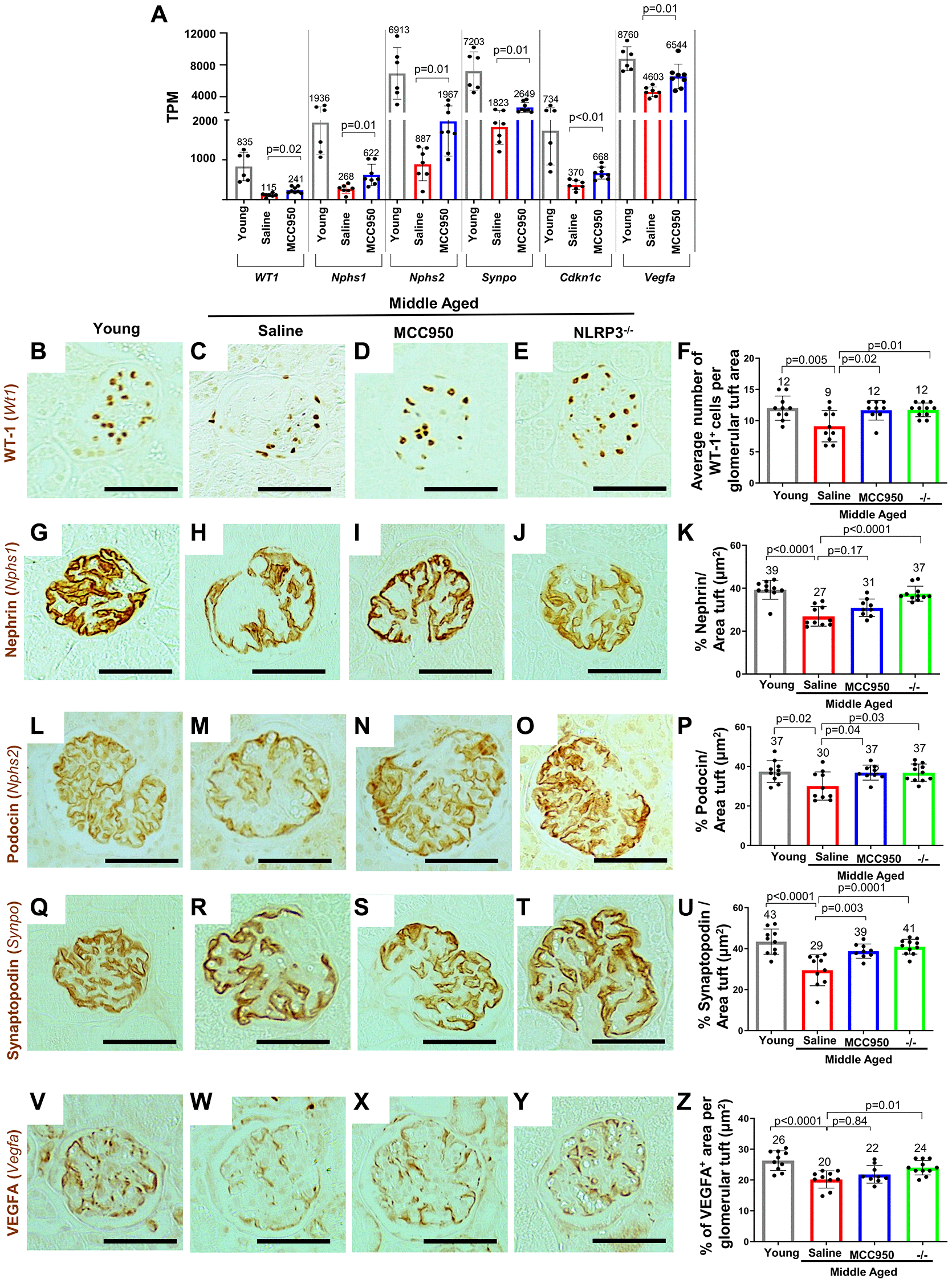
qPCR validated these results, showing increased mRNA levels of the inflammasome components Nlrp3, Casp1, and Pycard in podocytes of aged mice. Immunostaining demonstrated a progressive rise in NLRP3 expression within glomeruli beginning at 18 months, predominantly localizing to podocytes; this was absent in NLRP3 null mice. NLRP3 transcript and protein levels were similarly elevated in glomeruli of aged human kidneys, associating with pathological changes like glomerulosclerosis and podocyte depletion. Key downstream effectors of the NLRP3 inflammasome, including Caspase-1, IL-1β, and IL-18, were additionally upregulated in glomeruli of middle-aged mice.
To investigate whether injury exacerbates NLRP3 upregulation, the researchers utilized a mouse model of podocyte ablation-induced focal segmental glomerulosclerosis (FSGS). Immunostaining revealed NLRP3 expression escalated in injured podocytes in this model. Moreover, when FSGS was induced in 24-month-old aged mice, NLRP3 levels were further elevated compared to young mice with FSGS. Together, these findings suggest aging and injury act synergistically to aberrantly activate NLRP3 signaling in podocytes.
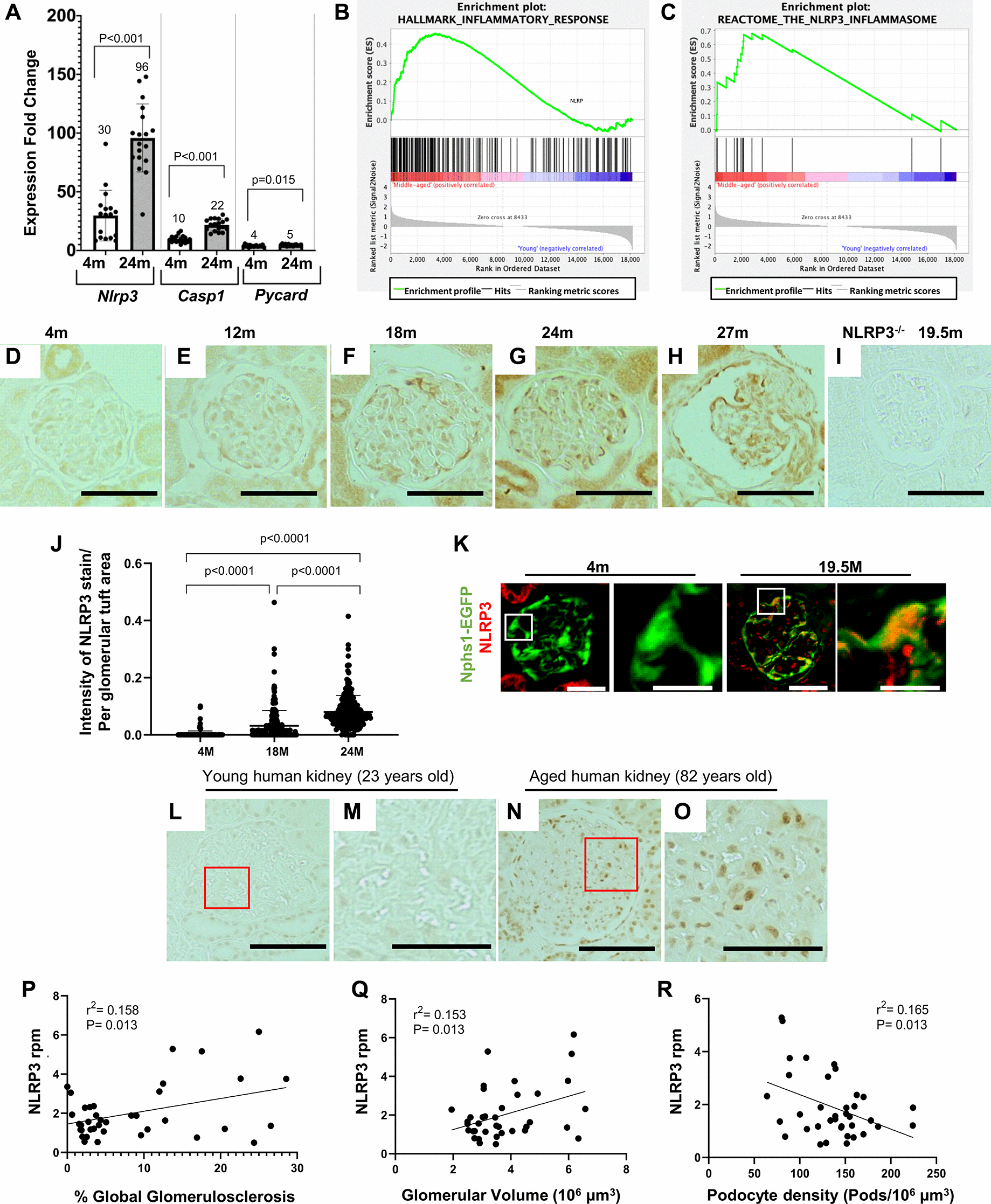
Functional role of increased NLRP3 signaling
To delineate the functional role of increased NLRP3 signaling, middle-aged mice were treated with the selective NLRP3 inhibitor MCC950 or engineered to lack NLRP3 genetically. Both approaches curtailed immunostaining of NLRP3 and downstream mediators like Caspase-1, IL-1β, and IL-18 within podocytes compared to controls. Podocyte density, quantified by p57 immunolabeling, declined in middle-aged mice but was restored with MCC950 treatment or NLRP3 deletion. Glomerular collagen IV deposition similarly abated, and podocyte hypertrophy improved, upon NLRP3 blockade. Using expansion microscopy, NLRP3 inhibition or knockout additionally mitigated age-related deterioration in foot process width and glomerular basement membrane integrity.
Beyond structural improvements, podocyte health was further bolstered by NLRP3 inhibition or deletion, reflected by heightened expression of podocyte-specific genes and proteins like Nphs1, Nphs2, and WT1. VEGFa expression also climbed, indicating improved synthetic function. RNA-sequencing of isolated podocytes showed MCC950 treatment reversed inflammatory and aging-associated transcripts, suggesting NLRP3 activation intrinsically drives the natural aging process in these cells. Finally, the authors found liver IL-1β levels and fat deposition were reduced in middle-aged mice with MCC950 treatment or NLRP3 deletion, denoting the anti-aging effects of targeting this pathway extend beyond the kidney.
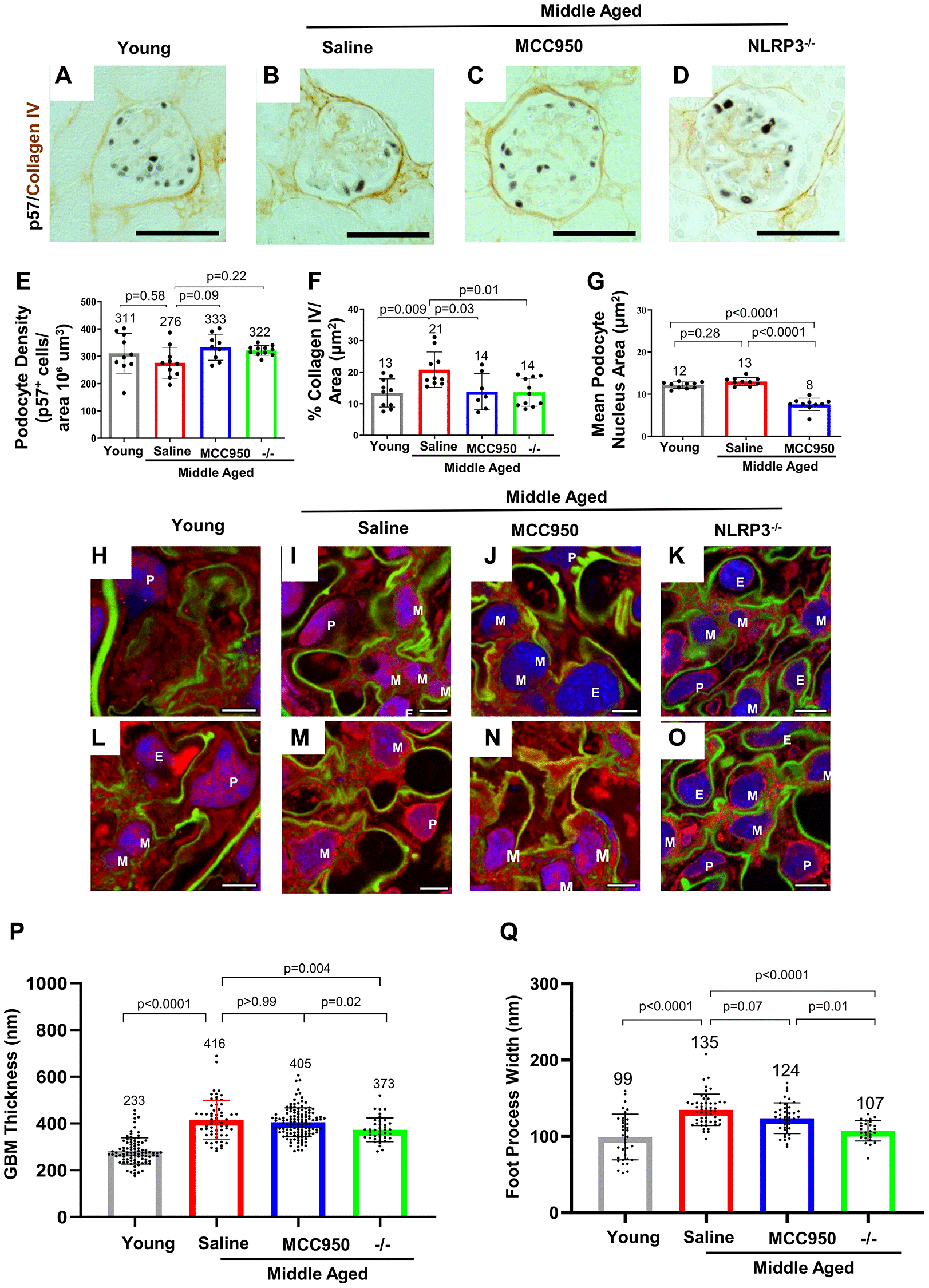
These results demonstrate middle-aged podocytes acquire an inflammatory phenotype underscored by aberrant NLRP3 signaling that promotes cellular aging. Blocking this pathway pharmacologically or genetically improves podocyte lifespan, health, and age-related transcriptomic decline while alleviating inflammation. The multi-tissue anti-aging effects of inhibiting NLRP3 position this inflammasome as a conserved mediator of aging that is druggable to promote healthy longevity. Additionally, the researchers used human kidney organoids to model injury-dependent NLRP3 signaling and confirmed the anti-senescence effects of MCC950 in a human system.
The implications of this study extend beyond kidney health, as the researchers also found that NLRP3 signaling plays a role in liver aging. These findings suggest that targeting NLRP3 may have broader therapeutic implications for age-related diseases.
While further research is needed to validate these findings in clinical settings, this study offers promising insights into the mechanisms underlying podocyte aging and highlights the potential of NLRP3 inhibition as a therapeutic strategy for promoting kidney health in aging individuals.
The research findings provide a foundation for future studies aiming to develop targeted interventions to mitigate the effects of aging on kidney function, ultimately improving the quality of life for older individuals at risk of kidney diseases.
Reference
Kaverina N, Schweickart RA, Chan GC, Maggiore JC, Eng DG, Zeng Y, McKinzie SR, Perry HS, Ali A, O’Connor C, Pereira BMV, Theberge AB, Vaughan JC, et al. Inhibiting NLRP3 signaling in aging podocytes improves their life- and health-span. Aging (Albany NY). 2023 Jul 23; 15:6658-6689 .
